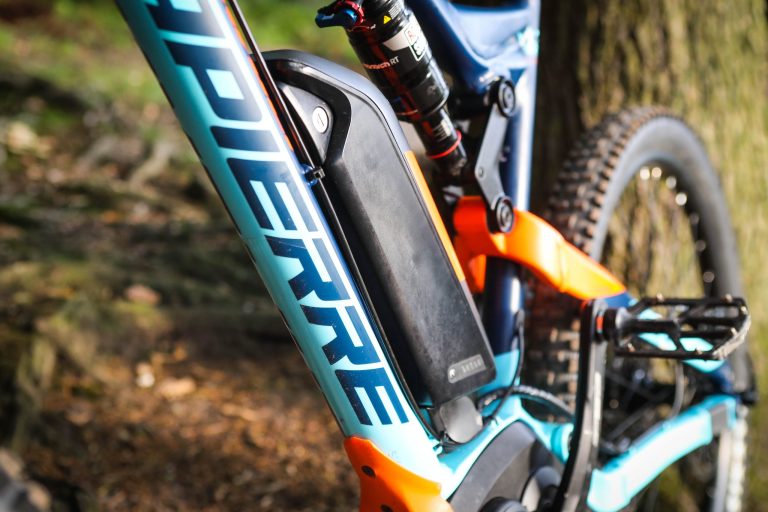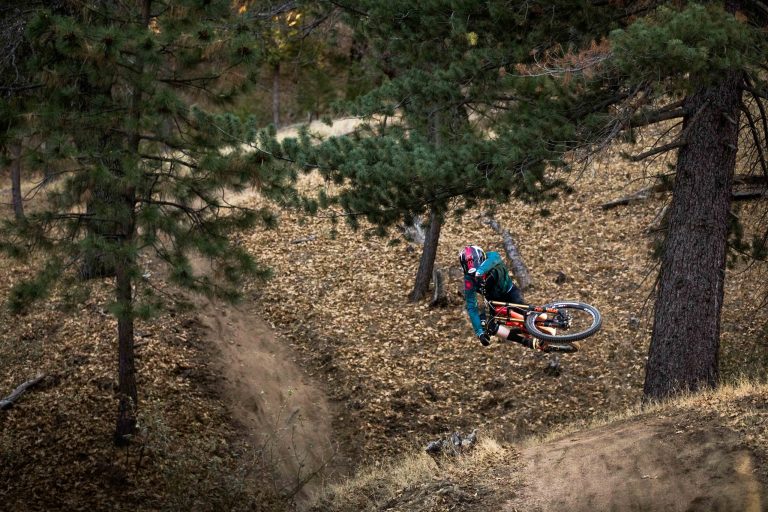
Words by David Arthur, photos by Gary Perkin
Nino Schurter shocked the mountain bike world when he raced to victory at the opening world cup event in South Africa aboard a Scott Scale with 650b wheels. Normality resumed (sort of) when Julien Absalon proved there’s still a place for 26in wheels at the second round in Belgium.
Then, at the weekend Nino once again claimed top honours on his 650b Scott as the UCI Mountain Bike World Cup took place in the Czech Republic, further igniting the wheel size debate.
The wheel size debate is big this year
2012 is threatening to mark the biggest upheaval in the development of the mountain bike since, and the debate is all about wheel size. From the beginning, despite a few brief flirtations, the mountain biking industry settled on 26in wheels, and in the couple of decades since we’ve been blissfully enjoying 26in mountain bikes. In recent years the subject of the best wheel size for mountain biking has risen to the top of the agenda.
Why are we even on 26in wheels in the first place? The reason the Repack riders used 26in wheels back in the 70s and not the more common 700c road wheels around was down to one simple thing: tyre choice. There simply weren’t suitable tyres for off-roading in the larger size. Cruiser bicycle manufacturer Schwinn however produced bikes using 26in wheels, which came shod with fatter tyres, much more suitable for blasting down the tracks those long haired guys were racing. In those early years mountain biking moved swiftly, and there was very little discussion about wheel size. 26in was simply adopted as it proved to work reasonably well. 30 years later and that debate is now raging.
In the years since the first mass produced mountain bikes, there’s been some who have held firm that 26in isn’t the best for mountain biking. 650B is claimed in some quarters to be the best size for mountain biking. It has long since been the sole resolve of French cycle tourists, but if we go back to 1951 we discover that a young group of cyclists, the Velo Cross Club Parisien (VCCP) could claim to have invented mountain biking. Only they never realised it.

They adapted their 650b touring bikes for off-road use – there’s even YouTube footage of those early cyclists in action. Suspension forks were borrowed from mopeds and improved brakes and gearing were the main changes that allowed these pioneering cyclists to embrace the essence of mountain biking that we take for granted today. If this movement had gathered a little more momentum who knows how the sport might have developed. It could have been very different. Maybe we would all be riding around on 650b mountain bikes already?
Instead the industry continued with26in. Then, along came the rise of the 29in wheel size, in recent years we’ve seen an explosion of 29er bikes. 2012 really does seem to be the year of the 29er. Gary Fisher pushed the concept of 29in wheels, larger at 622mm diameter than the 559mm of 26in wheels and 584mm of 650b.
The first manufacturer to attempt to bring a 29er to market was Bianchi in 1989, when it brought out a bike with 700c wheels and components like flat bars, thumb shifters and a triple chainset that we would recognise today as standard equipment. It didn’t catch on. By 1995 it was quietly dropped from the Italian company’s range. Gary Fisher, an early adopter and pivotal to the rise of 29ers, brought out his first big wheels bike in 2002.
Now, with the support of most US brands, 29ers are going global. European brands have been forced to follow suit, with 29ers featuring in the catalogues of most medium to large size companies. They’re creeping into more bike shops and more bike sheds and garages across the country, and more people are considering a possible purchase.
So 29ers are the future? Perhaps not, as a 650b mountain bike (a Scott Scale) has just gone and won the first round of the UCI World Cup. This sent shock waves through social media networks like Twitter over the weekend as thousands visibly recoiled in disbelief. Is the future now 650b?

Does 650b offer the best of both world? That’s the question on many people’s lips. The handling could feasibly feel more akin to a 26in (as it’s only marginally better) but with some of the highlighted benefits of 29ers; increased rolling speed, momentum, smoother and more stable ride over rough terrain, more traction. Another advantage of the 650b wheel is the more vertically challenged people will be better able to get a good fit – we’ve seen some drastic solutions taken by sponsored riders forced to ride 29ers to get the handlebars low enough to replicate a fit they happily achieved on their previous 26in bikes. And we know how racers like to slam their handlebars and get as low as possible.
That’s largely a reason Nino is said to have chosen a 650b from a choice of three wheel sizes. And of course there’s the weight advantage, there’s no getting away from the fact smaller wheels are lighter.





